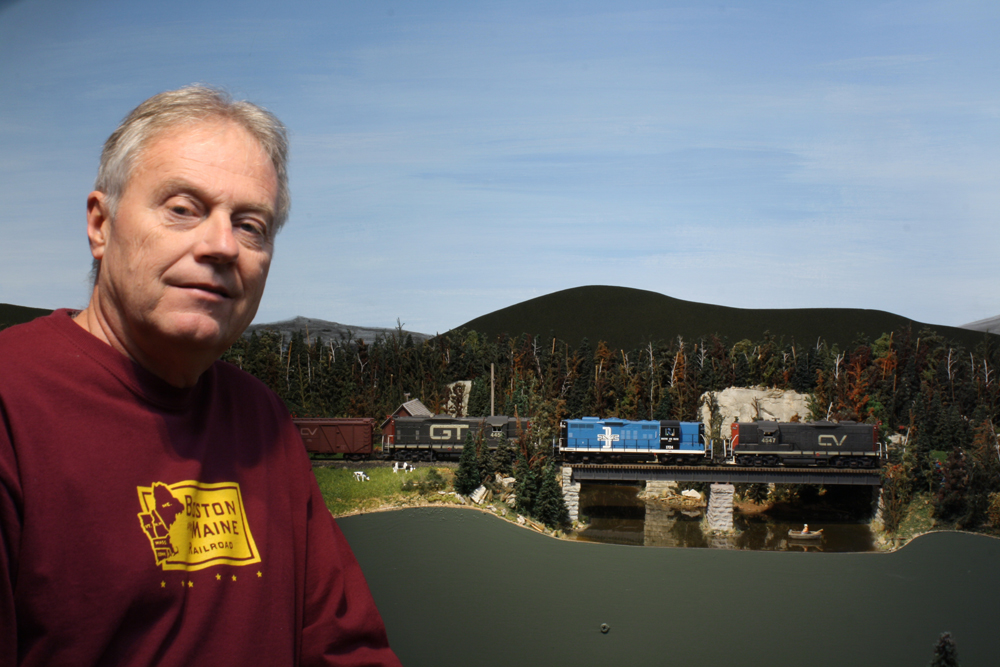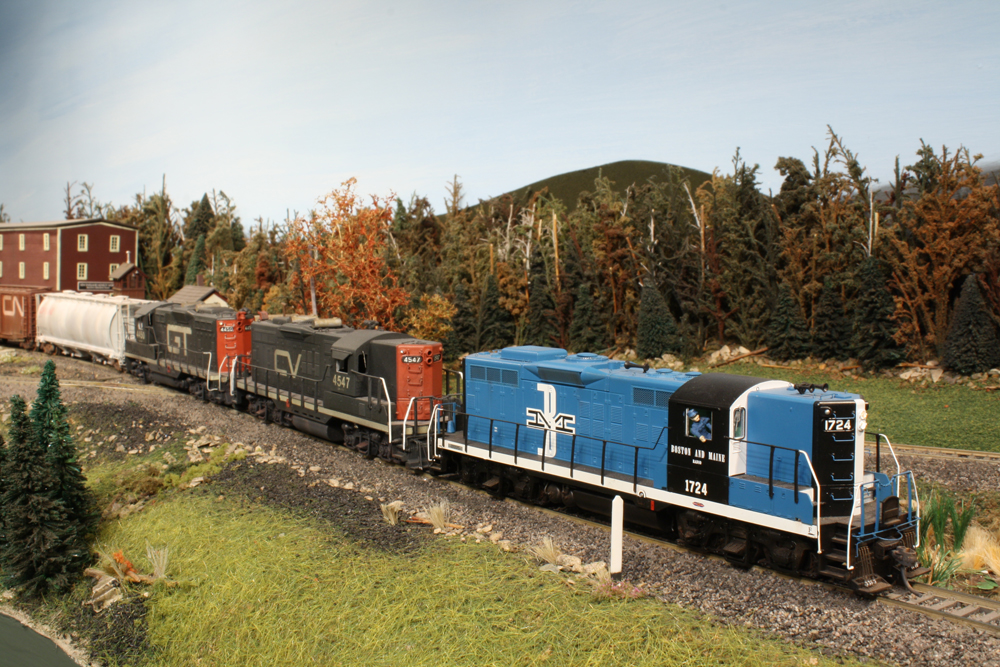
It’s been more than a decade since Lou Sassi photographed my HO scale White River Division for a feature in the March 2009 Model Railroader. A lot has changed since then. The track plan has been altered to better view and photograph scenes. I also eliminated the duckunder. Now a point-to-point layout, there’s a yard at each end of the line for staging. Though my primary modeling focus is the 1950s, I’ve been incorporating equipment from other decades during the summer months.
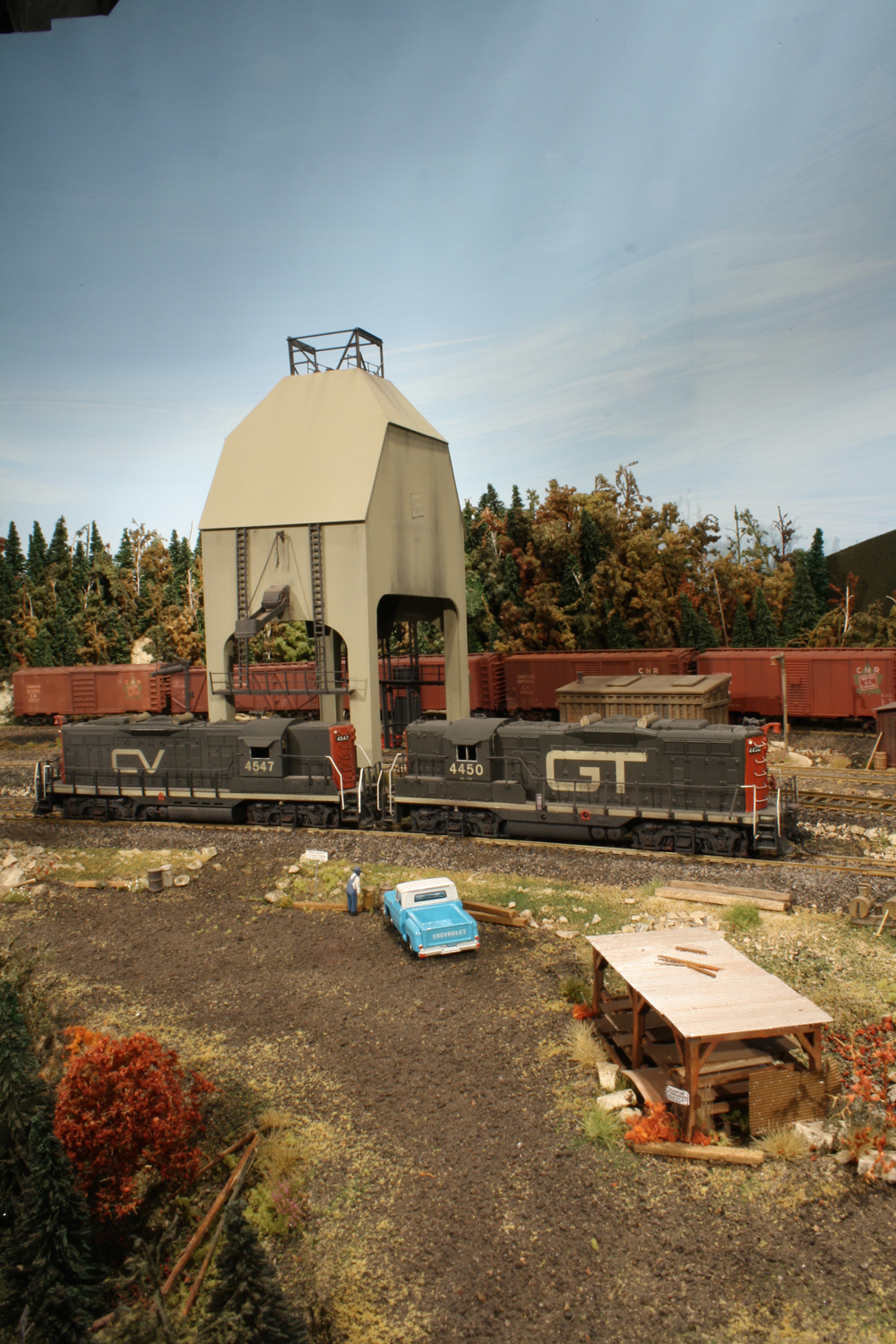
For most of the year the White River Division is set in the 1950s. During the warmer months I’m often away at the lake and the model railroad goes on hiatus. I usually take all of my equipment off the layout to make cleaning and dusting the White River Division much easier come fall. This practice also keeps dust from accumulating on locomotives and freight cars.
The last couple of summers I’ve had modelers contact me to visit the White River Division. Not having any engines or equipment on the tracks became a concern.
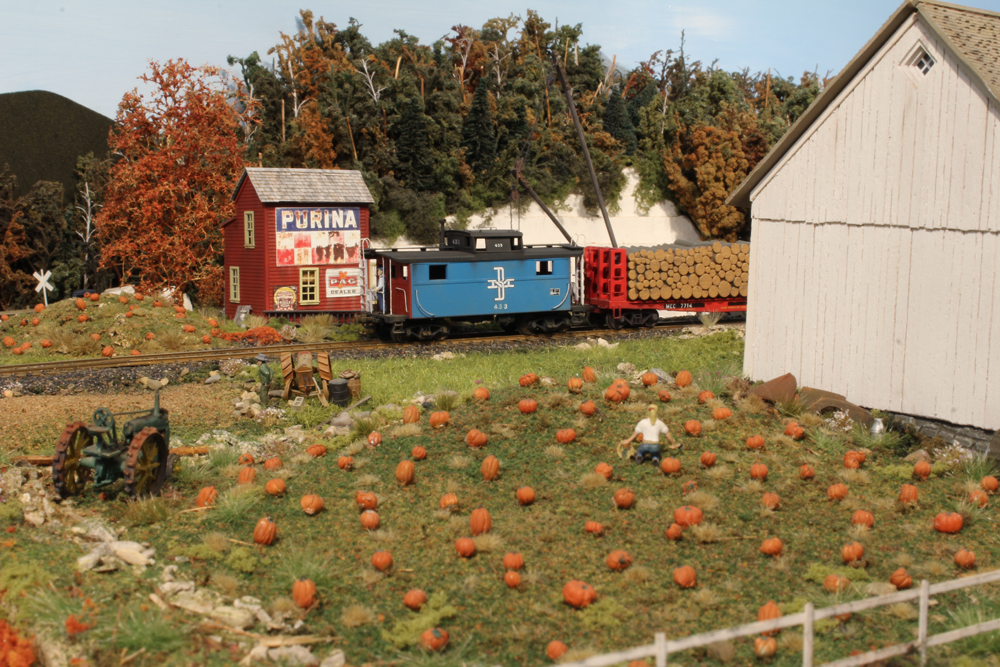
I have a varied collection of New England equipment that appeals to me but doesn’t fit into my primary operating era. The locomotives and freight cars are normally stored or displayed elsewhere. Could this group of equipment be put to use moving my layout forward to another era? By doing this I could keep the layout ready to run when guests stop by for a visit during the summer. A couple of trains could be parked on the mainline with a few cars located in each yard. The sidings would also look better with a car or two. In just a few hours, I can stage my layout and give it a totally different look.
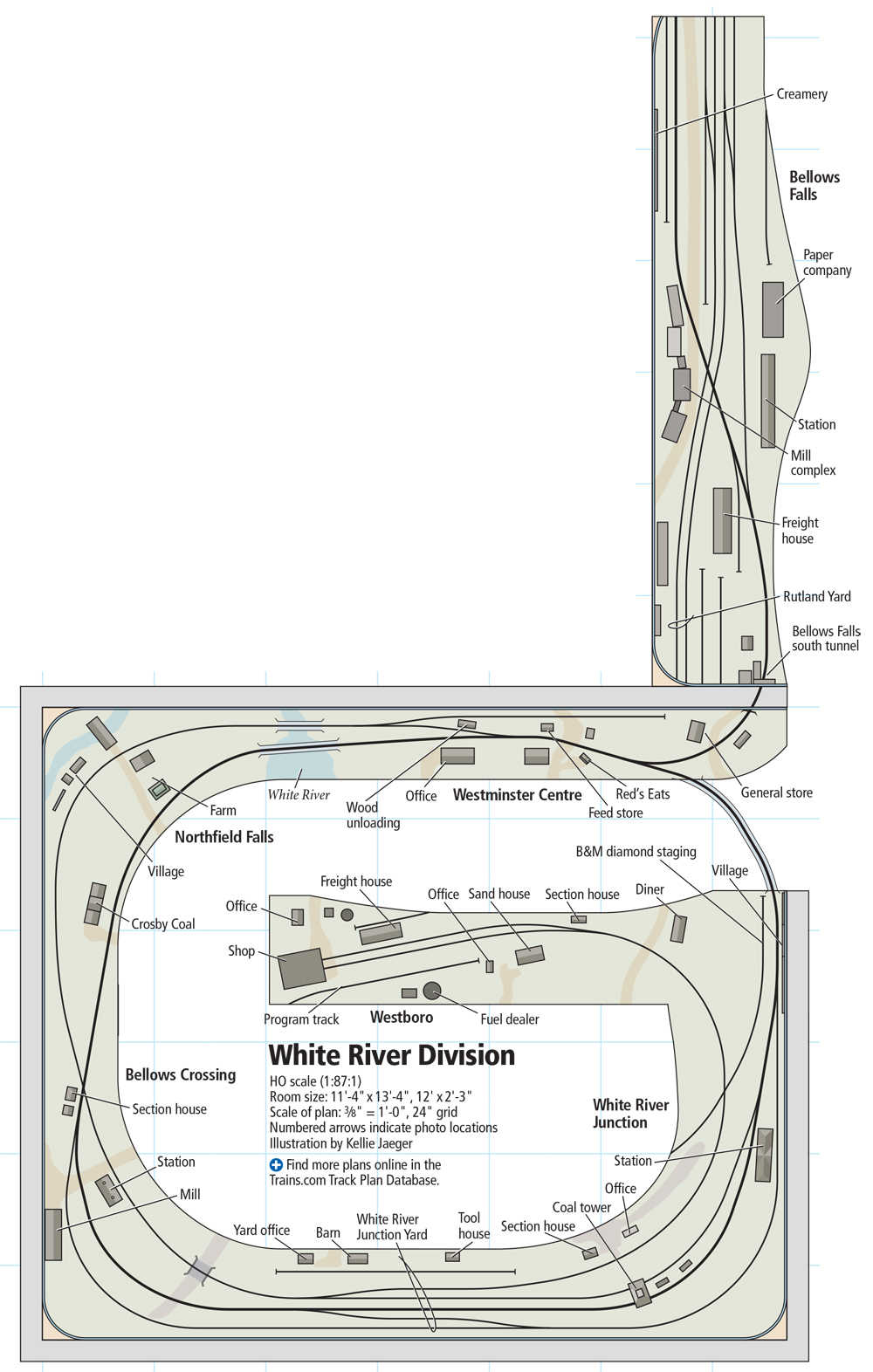
Era swapping isn’t new to the hobby, as I found out during a visit with my friend Don Janes to Wayne Sittner’s layout. Wayne’s Lehigh & Susquehanna Ry., featured in Great Model Railroads 2014, is set between 1978-85. Wayne can move his layout back to 1952-62 by changing out the rolling stock, vehicles, and a number of buildings. Wayne mentioned that in a day the whole layout could be backdated to the steam era. Wayne is an artist who loves the look and feel of life in the past. I would love to visit his layout again after it’s been transformed.
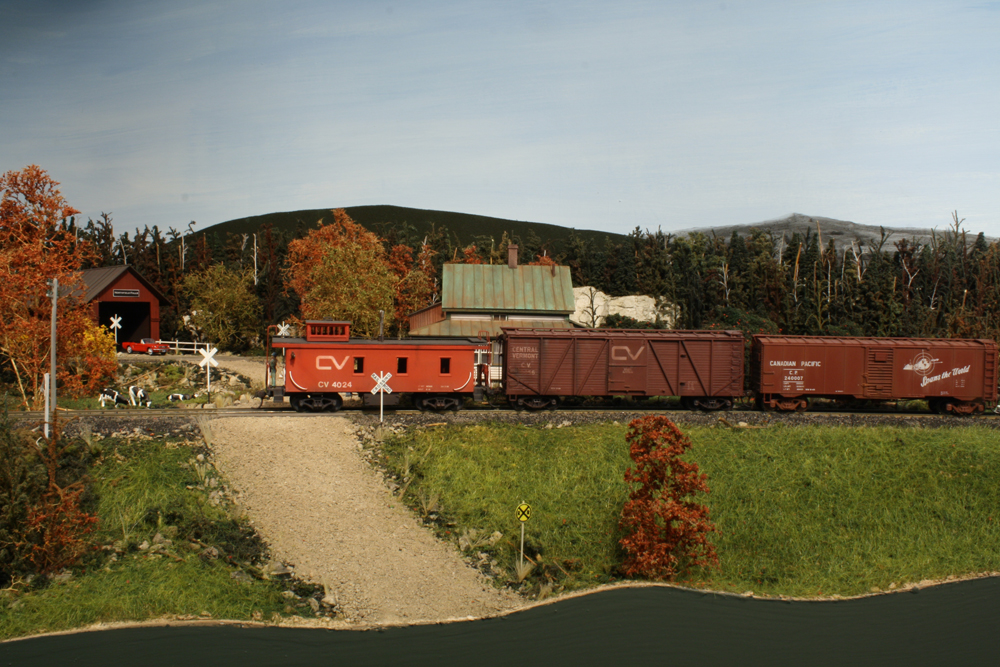
With Wayne’s point of view fresh in my mind, I contemplated how many eras could I model on the White River Division? That will depend, in part, on doing an inventory of the equipment I currently have on hand. During the past two summers, I’ve been able to move my layout’s era forward to the 1960s and 1970s. Since then, I’ve found almost enough equipment to re-create the 1980s, 1990s, and possible current operations. I’ve grouped these models into what I can era-specific consists.
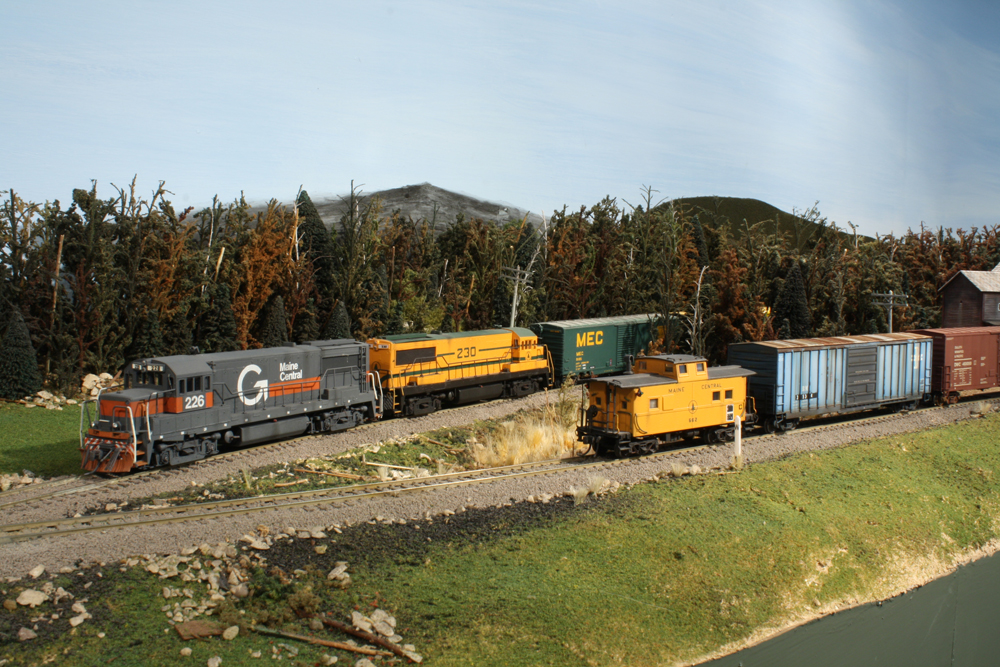
My layout measures 12 x 14 feet plus a 12-foot extension into the next room. The model railroad’s size makes modernizing scenes a realistic goal. Being set largely in rural New England during the 1950s, most of the scenes can be left as is. The main items that need to be swapped out are the trains and vehicles. Modernizing some structures could also help reinforce the time frame. Locations along the mainline, such as the railroad crossing and junction, could also be updated with contemporary signage.
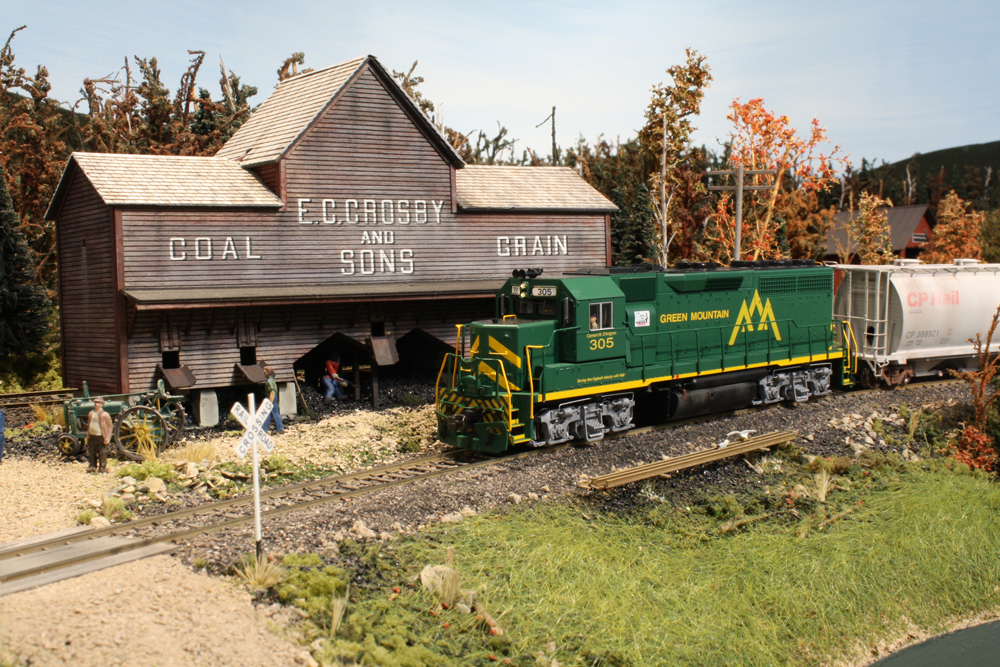
Updating locations can be done with drop-in scenes, a topic I wrote about in Model Railroad Planning 2018. The Bellows Crossing diamond received a reversible Rutland-style station. Since only two sides of the building are visible at any time, I boarded the windows up on two sides to make it look abandoned. The other two sides depict the station as it looked in the 1950s.
At Westminster Center, the Rutland-style station is changed out with a drop-in lineside Boston & Maine (B&M) storage shed modeled from a retired boxcar. Across the tracks the creamery is removed and replaced with a lumber unloading area which only requires a small shack, some unloading equipment, and bundles of lumber and banding.
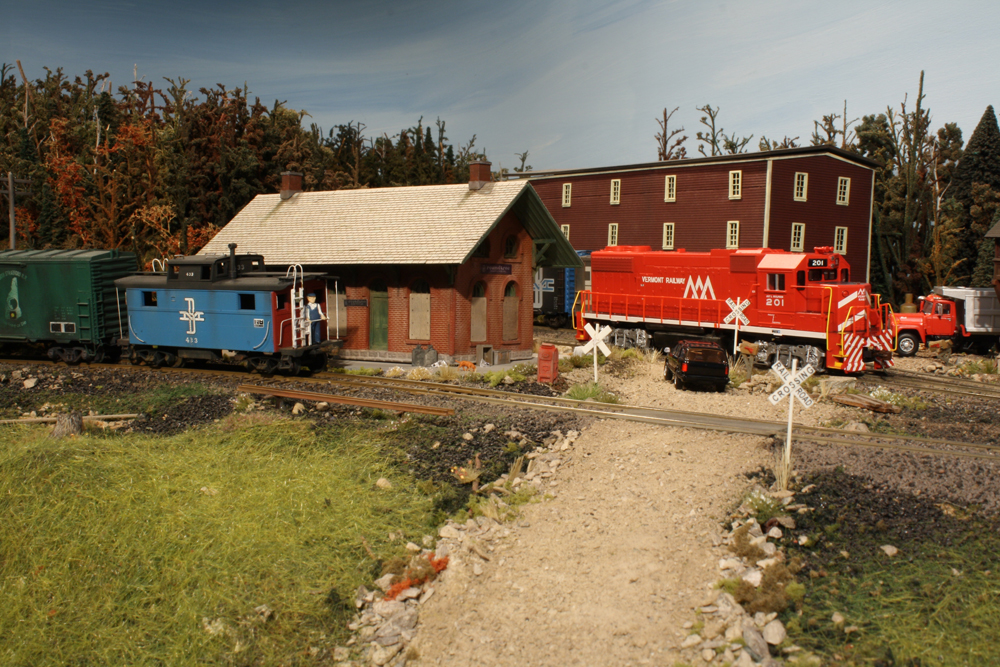
Outside Westminster Center at a crossing near the feed store is another drop-in scene. Normally a section house or water tower is located here. For later eras, I built a new scene which is my version of Red’s Eats, a location famous for its lobster rolls in Wiscasset, Maine. The restaurant, adjacent to the ex-Maine Central Rockland Line, still stands. On my layout this location is a good stopping spot for my train crews when a meal is needed on the fly. Having worked for 33 years as a railway engineer, I know a lot about go-to spots.
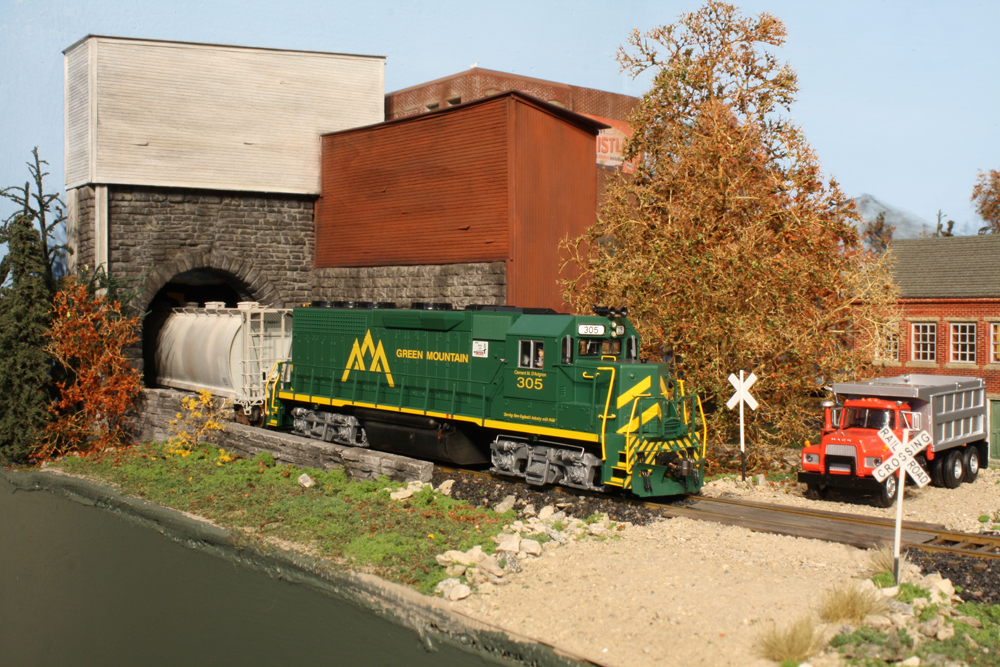
Lineside customers such as Crosby Coal are scenes found along the Rutland Ry. in the 1950s. Crosby Coal has changed little over the years and still stands next to the Vermont Ry. This scene can be left as-is for trains to pass during any of my modeling eras.
The engine servicing area for White River Jct. is across the river at Westboro, N.H. I’ve modeled the sand house, sand tower, section house, and fuel platform for the 1950s. Not much changed for the next few decades, so I can use this scene for the 1960 and 1970s. Though now abandoned, many of the structures still stand, including the sand house, roundhouse, section house, and division headquarters. Both ends of the layout, White River Jct. and Bellows Falls, aren’t that easy to change and will remain as-is for now.
Era-specific consists
My current problem is filling out trains for eras beyond the 1950s. To make things easier I’ve divided my equipment into decades. The 1960s is my go-to summer changeover as a lot of what I run regularly is appropriate for the next decade.
I have a limited collection of engines and rolling stock for the 1970s and 1980s. I have even less if I try to model the modern era. This is a good problem to have, though. I can research what I need and find what’s offered online and in the current Walthers reference book.
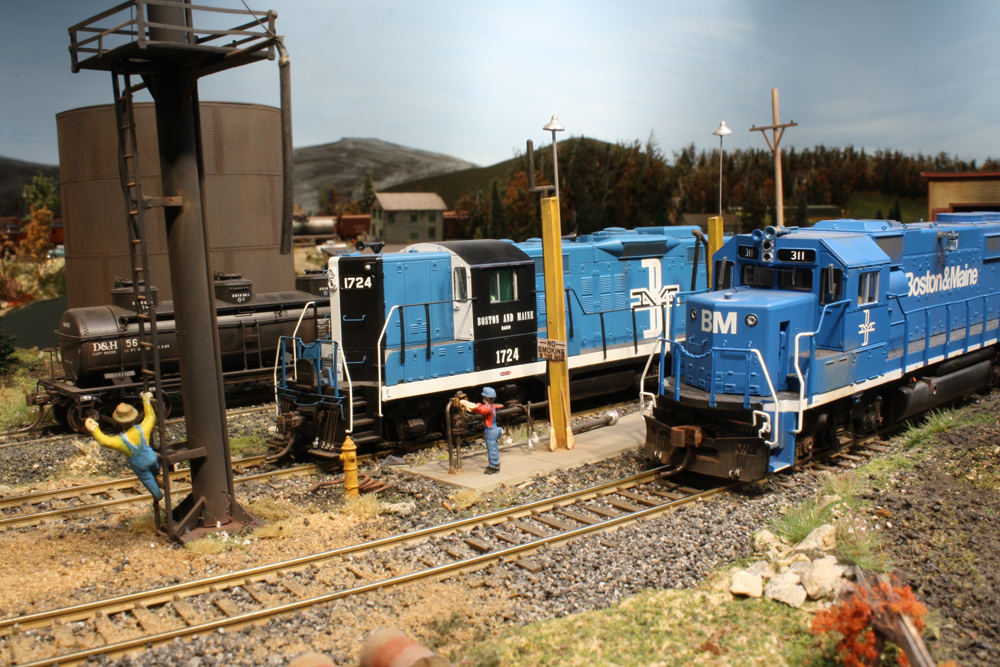
The 1970s may have been the most colorful era for Central Vermont’s diesel fleet. The Coast Guard and American Revolution Bicentennial units, as well as the olive-and-gold repainted Geeps, accented the other schemes of the decade. The 1970s also had some interesting operating practices that I can re-create, such as the pool trains operated by the CV and B&M and Canadian Pacific (CP) and B&M.
For the CV/B&M trains, each road supplied one or two engines to the pool from 1977-1982. Since I have some CV and B&M GP9s, these trains are easy to model. My friend Peter Mumby has offered on long-term lease his model of B&M GP40-2 No. 311. The GP40-2s began arriving on the B&M in the late 1970s.
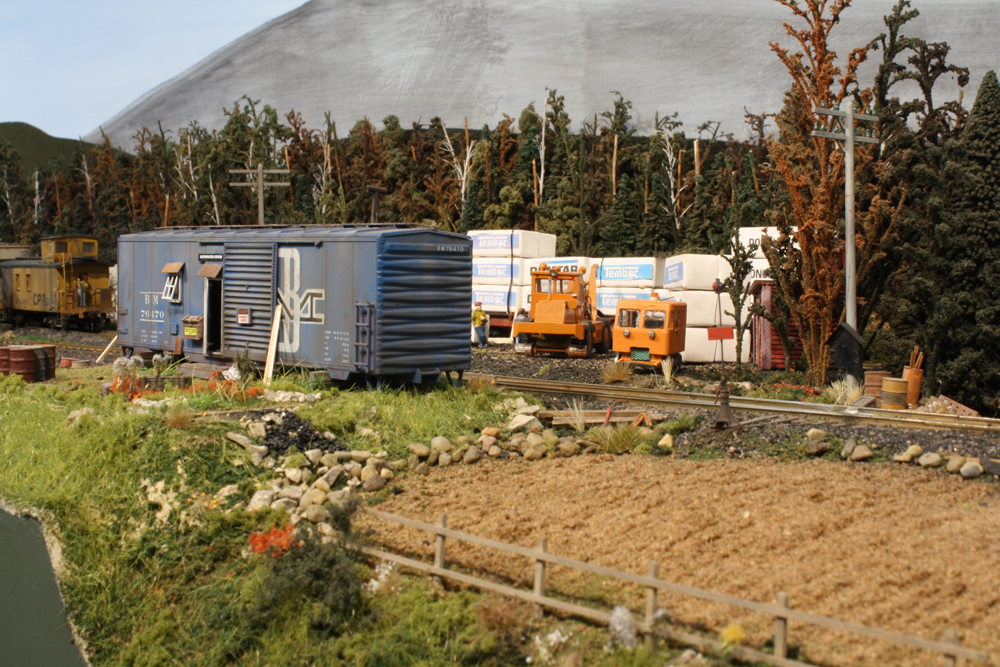
In the 1980s, you could see MEC U25Bs (Nos. 225-238) in the area I model. Nine of the 14 U25Bs that came to the MEC in August 1980 spent most of the decade in New England. I modeled two Bowser U25B engines in MEC and Guilford paint when they first were offered. Although these models are now in the collection of Peter Mumby, they do come home on occasion when required. Bowser once again offers U25Bs, but now with Digital Command Control and sound. I may add one of these new offerings to my fleet.
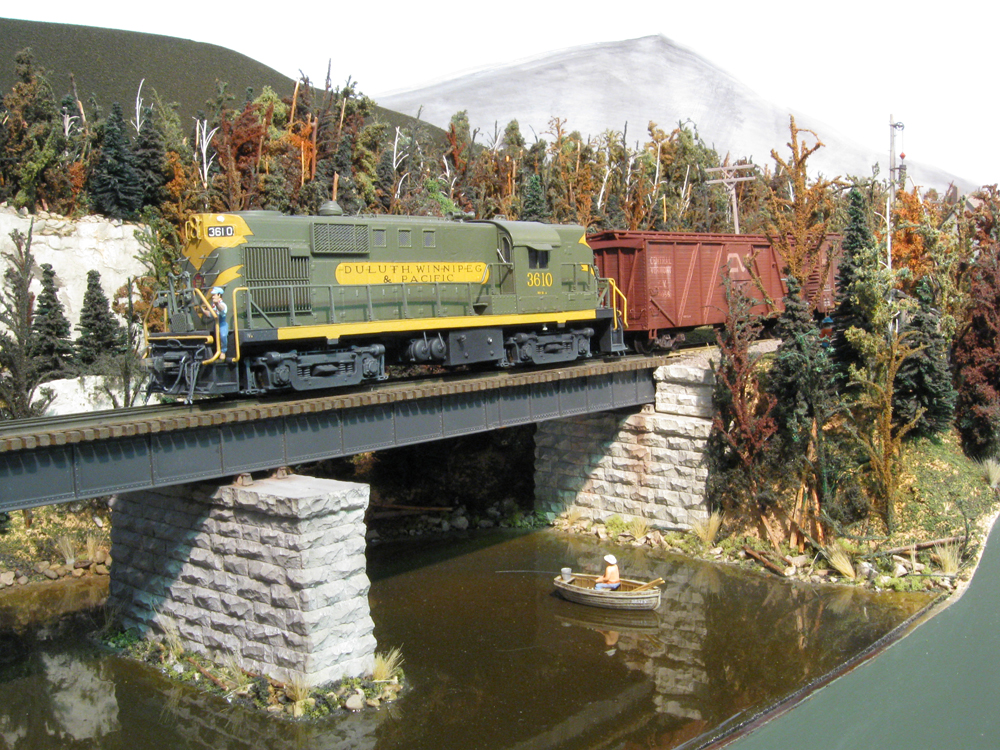
Another aspect of modeling northern Vermont in the 1980s is the early years of Guilford. Guilford purchased the MEC in 1981, the B&M in 1983, and the D&H in 1984, making for some colorful consists. During these years you could find cabooses from all three lines on trains. Following the purchase, many of the diesels were repainted into the Guilford Gray scheme.
For the 1990s and beyond, I’ve acquired some Vermont Ry. and Green Mountain (GM) units that my friend Andy Greenlees was selling off. Green Mountain No. 405, an RS1, will be used as my Bellows Falls yard switcher. The prototype can still be found today working at White River Jct. or Bellows Falls.
The Vermont Ry. units will be used on the mainline. The Central Vermont Ry. was taken over by the New England Central Ry. in 1995, which opens the doors for some NECR GP38s.
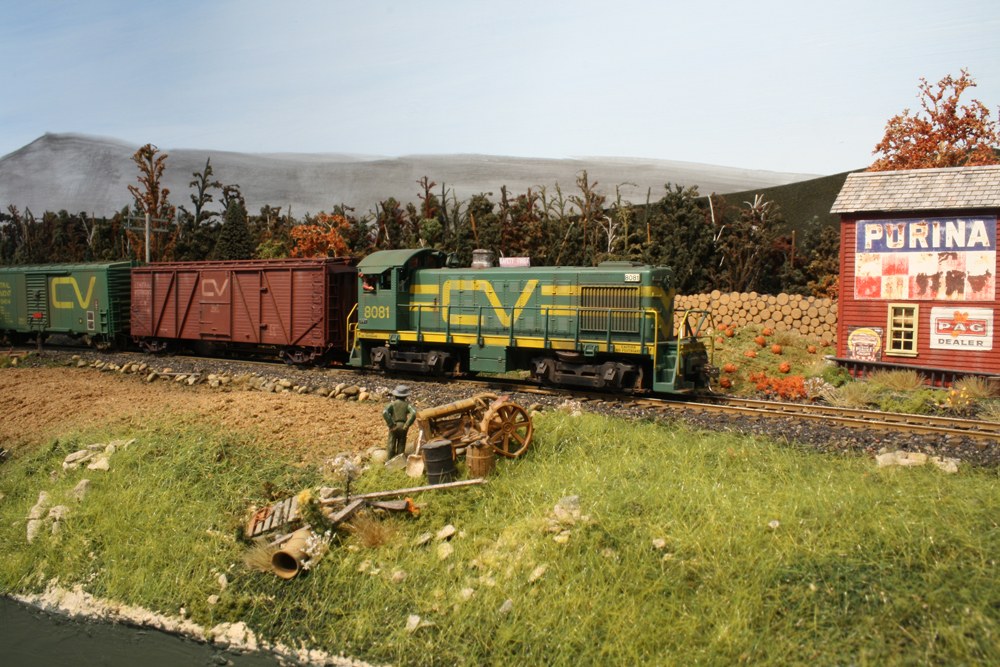
Railfanning the White River Division
Since I’m a bit of a railfan, I included some photo locations on my model railroad. Perhaps the best scene on the White River Division is Bellows Crossing. Another location is Middlesex Center, a junction where two lines come together. There’s also a spur at this location.
A bridge scene over the White River and numerous grade crossings are great spots to view trains and take a photo. Almost all of the scenes were designed to double as railfan locations. There are numerous angles to consider. I’ve been surprised seeing what views visitors have captured.
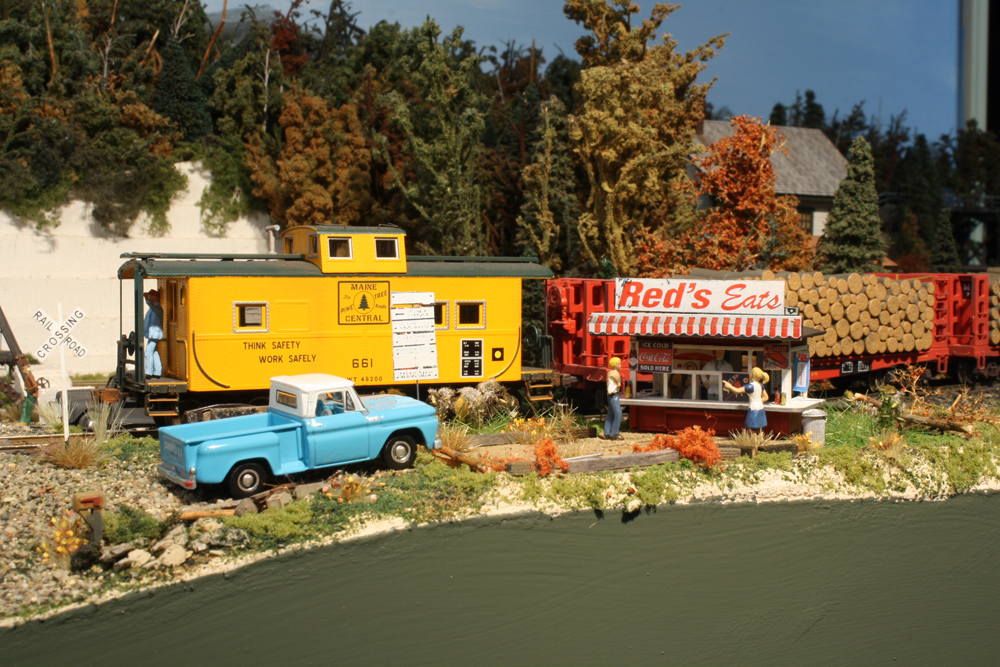
Future consist plans
Since Canadian National (CN) and CP trains frequent the area I model, I want to add more Canadian presence to my consists. I’ve already acquired a Rapido C40-8M, which CN began receiving in 1990. I recently saw an appealing view of an all-CP consist in East Deerfield during the winter of 1976. The trio of London, Ont.-built GMD power featured a GP35, F7B, and GP30, all which are offered in HO scale. I’m sure I will locate each of these units at some point to fill in my 1970s fleet.
Rolling stock is another consideration. I need a few more pieces for the later eras. I plan on turning a few pieces into rust buckets using acrylic paints. Weathering is another area of the hobby that I will venture into.
As one can see, I do have a lot of options for how the White River Division will look going forward. Although operating my layout in the 1950s is my primary focus, I’m excited to see what will happen with summertime operations in the future.
Layout at a glance
Name: White River Division
Scale: HO (1:87.1)
Size: 12 x 14 feet plus 12-foot extension
Prototypes: Central Vermont, Boston & Maine, Vermont Ry., and Green Mountain Ry.
Locale: Vermont and New Hampshire
Era: 1950s to present
Style: around the wall
Main line run: 50 feet
Minimum radius: 24”
Minimum turnout: No. 6
Maximum grade: none
Benchwork: L-girder
Height: 48”
Roadbed: Cork
Track: code 83 flextrack
Scenery: plaster cloth over cardboard webbing
Backdrop: drywall with sheet-metal coved corners
Control: NCE power cab DCC
George Dutka is a retired Canadian National Ry. locomotive engineer with 33 years of service. He’s a member of the National Model Railroad Association, Canadian Association of Railway Modelers (CARM), and the Central Vermont Railway Historical Society, including a stint as editor of its quarterly publication, The Ambassador. George is currently the CVRHS modeling editor. He and his wife, Susanne, live in London, Ontario, Canada, where he also enjoys photography, sailing, woodworking, and visiting their five children and eight grandchildren.
